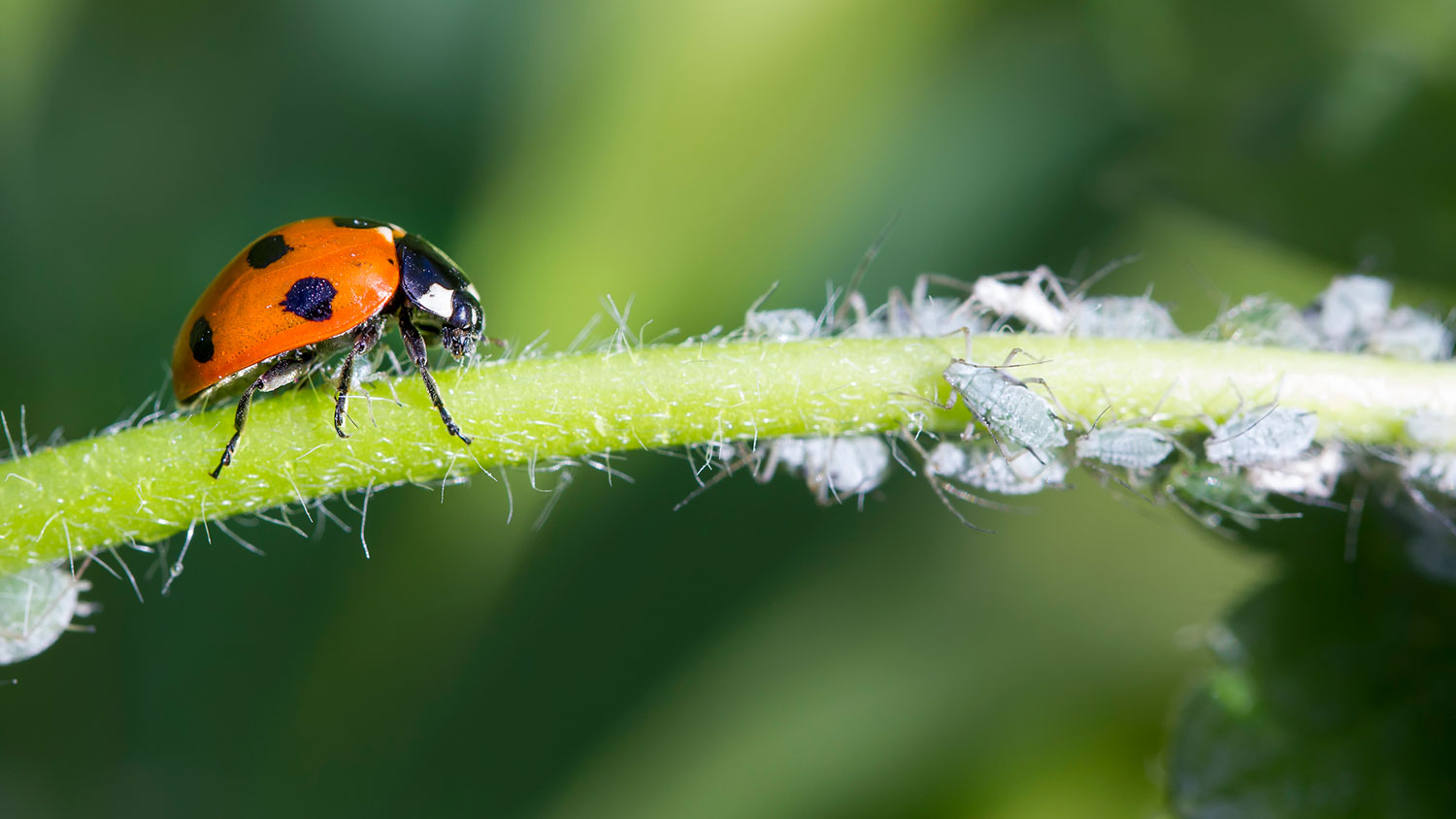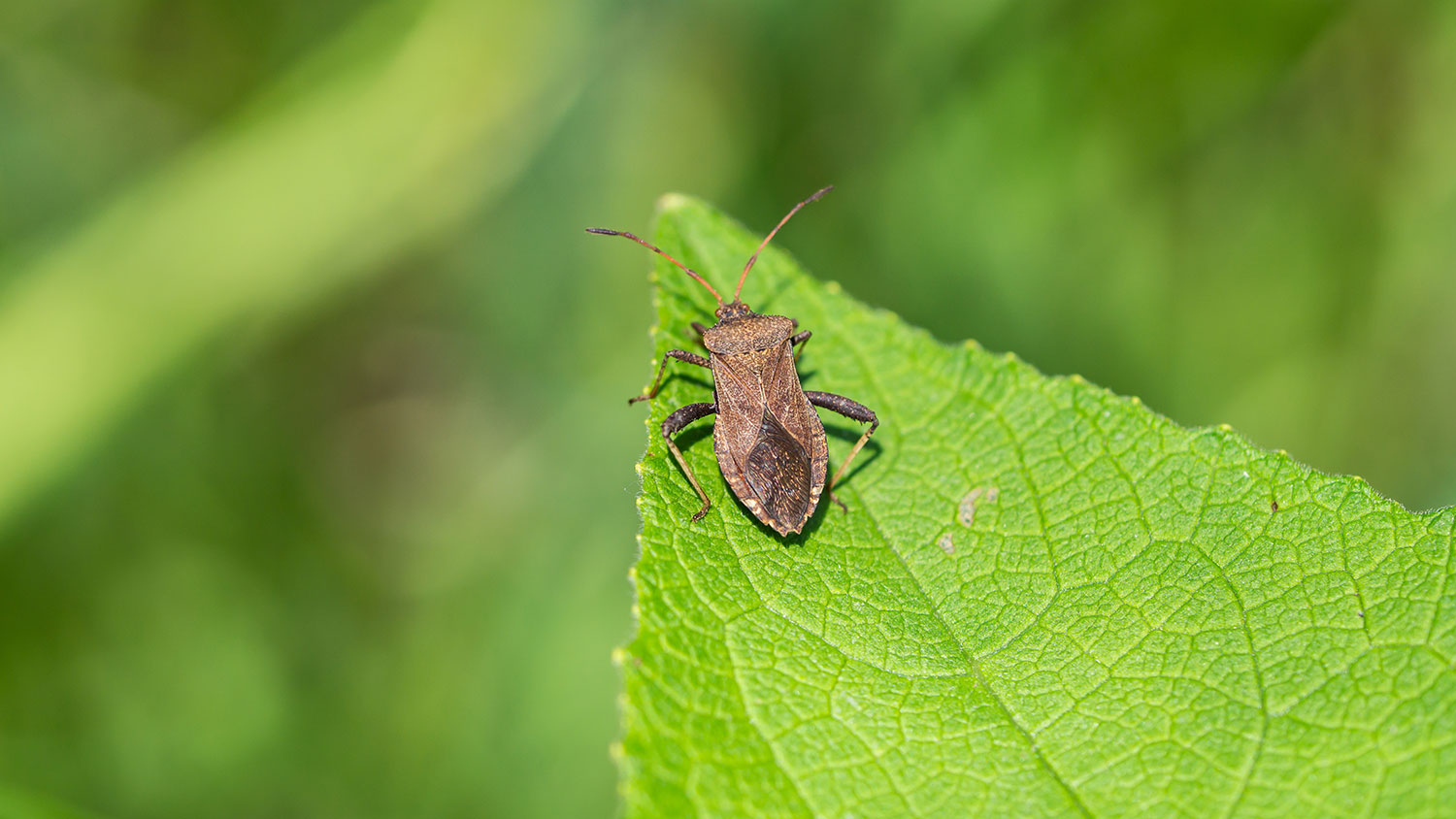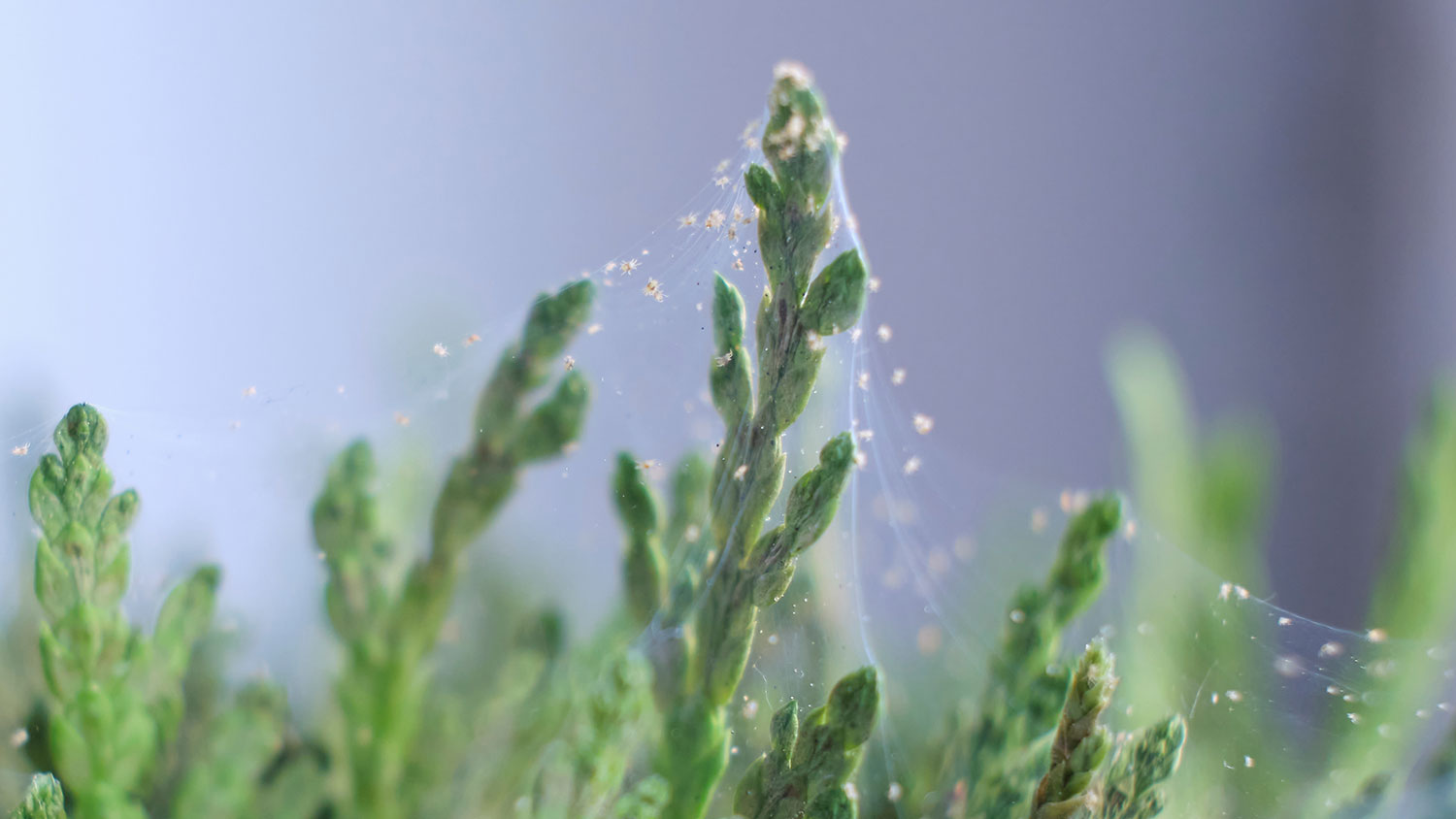8 of the Worst Garden Pests You Should Definitely Tackle ASAP
Learn how to identify and control who’s pestering your plants


There’s no greater pain to a gardener than lamenting the loss of crops. Unfortunately, garden pests are impartial to the grief they bestow as they greedily chow down and cause destruction. Here are the top enemies of your garden and how to fight back.
1. Snails and Slugs
Snails and slugs aren’t just a gag-inducing sight around the garden. These slimy scoundrels munch and crunch on flowers and vegetables, leaving behind large holes that can reduce crop yield, cause major damage, or even kill plants. They’re particularly fond of marigold, hosta, and leafy green veggies, though their menu can include a wide variety of crops.
What to Do About Them:
To get these intruders to escar-go, try leaving out a shallow bowl of beer, digging it into the ground so the basin is flush and easy to access. Since they’re quite partial to a good brewski, they’ll plop in to drink and drown. You can also find store-bought snail traps or DIY them using rinds of melon or citrus as domes to catch them.
Aside from traps, you can use copper or diatomaceous earth as a barrier, as well as coarse substances like coffee grounds and crushed eggshells. You can kill a slug or snail on the spot with salt, but do so with care, as salt will also kill your plants.
2. Aphids

Aphids hide on the underside of leaves and feed on the plant juice of essentially everything in your garden, leaving behind distorted foliage and causing leaves to drop prematurely. These tiny nuisances vary in color and range from green to pink tints. They multiply quickly and can thrive almost anywhere, making them a pain to get rid of. If you spot them gorging, you’ll want to step in right away before they can do any more damage.
What to Do About Them:
A strong spray from your hose can send these bugs back where they came from. Natural pest control methods such as garlic or hot pepper spray can make plants far less appealing for a sap-sucking meal. You can also use Mother Nature as an ally by inviting beneficial garden insects such as ladybugs and aphid midges with nectar-rich flowers and a water source.
3. Japanese Beetle
Japanese beetles are easily identifiable by their iridescent green bodies, but don’t let the pretty colors distract you from their sinister agenda. These insects feed in groups and like to munch on rosebuds and other flowers. You can usually notice their presence by the skeletonized leaves they leave behind.
What to Do About Them:
The best method of DIY pest control is by spraying plants down with a mixture of soapy water or insecticidal soap. The best time to strike is early in the morning when the bugs aren’t as active.
4. Squash Bug

The name of the squash bug gives away its favored menu item. These garden pests love to suck the juices from squash and pumpkin plants, though they’ll go after melons, gourds, and cucumbers as well. They resemble a slender stink bug with a body that is either black or dark brown. After a session of greedy sap-sucking, these bugs leave places with yellowed foliage and wilted or withering vines. Vines can also develop black spots or turn entirely black.
What to Do About Them:
Give these pumpkin pillagers the boot with a spray of water and dish soap. Examine your leaves and vines for small, oval-shaped eggs that are copper-colored. Should you find any, scrape them into a soapy water solution or give them the oh-so-satisfying squish with your fingers.
5. Cucumber Beetle
Cucumber beetles are another garden pest named for the crop they consume. However, these spotted or striped bugs can also target zucchini, pumpkins, and green beans. Telltale signs of their destruction include holes and wilting or yellowing leaves. They can carry viruses and bacterial diseases such as the mosaic virus and bacterial wilt, transferring them between plants.
What to Do About Them:
Get these bugs to stop coming for your cucurbit crops by placing sticky traps or physically knocking them off your plants. Catch them with a paper plate or piece of cardboard. You can also suck the pests up with a vacuum. Protect your seedlings with row covers, but don’t forget to remove them for a few hours per day while they’re blossoming to allow pollination.
6. Flea Beetle

If only these garden pests munched exclusively on fleas, but they got their name for the way they jump when they’re disturbed. Flea beetles indiscriminately enjoy most vegetable plants, turning leaves into swiss cheese by creating tons of small holes. Their larvae also feed on plant roots, causing even more damage.
What to Do About Them:
Floating row covers can keep these tiny beetles from ever reaching your vegetable crops. For a natural deterrent, you can spray your plants with kaolin clay or garlic spray.
7. Vine Weevil
Vine weevils rudely destroy a number of ornamental plants, frequently targeting rhododendron, impatiens, asters, and cyclamen. They’re also a fierce enemy when you’re starting a container garden, as this is where they do the most damage.
What to Do About Them:
Physical removal is the most effective way to tackle these garden pests without resorting to chemical pesticides. You can also set sticky traps to catch more bugs while you’re away.
8. Spider Mite

Spider mites are tiny garden pests related to spiders—but don’t mistake them for a good bug. While spiders defend your plants by catching and eating pesky bugs, spider mites lazily suck up plant juices. When enough of them attack, leaves turn gray, brown, or yellow, eventually falling off altogether. You’ll also notice tiny silky webs on the underside of leaves (your friend, the spider, would have no reason to build webs in that spot).
What to Do About Them:
To fight back against these minuscule monsters, encourage beneficial insects in your garden, such as assassin bugs and ladybugs. Natural garden pest control sprays are also effective, but be sure they are spider mite-specific sprays.





- Pest Control Services
- Ant Exterminators
- Mosquito Control Companies
- Rodent Control
- Termite Control
- Bee Removal
- Animal Control
- Bed Bug Control
- Pest Inspection
- Flea Control
- Raccoon Control
- Skunk Control
- Spider Control
- Cockroach Control
- Bird Control
- Bat Control
- Opossum Control
- Snake Control
- Groundhog Removal
- 24 Hour Pest Control Services
- Bug Control
- Fumigation Companies
- Termite Tenting
- Lawn Pest Control Services
- 16 Beneficial Insects That Are Allies of Your Garden
- Plants That Attract Beneficial Pests, From Honeybees to Ladybugs
- 11 Tips for Creating a Bountiful Backyard Garden
- 8 Common Pollinators in Your Vegetable Garden
- Bring Back Your Dying (or Dead) Plant With These 8 Tricks
- How to Identify Carpet Beetle Damage
- How to Get Leaves Out of Mulch in 4 Simple Steps
- 9 Garden Styles to Inspire Your Outdoor Sanctuary
- 13 Essential Landscaping Tips for a Beautiful Spring Garden
- What Is Xeriscaping, and How Can You Do It Successfully?















